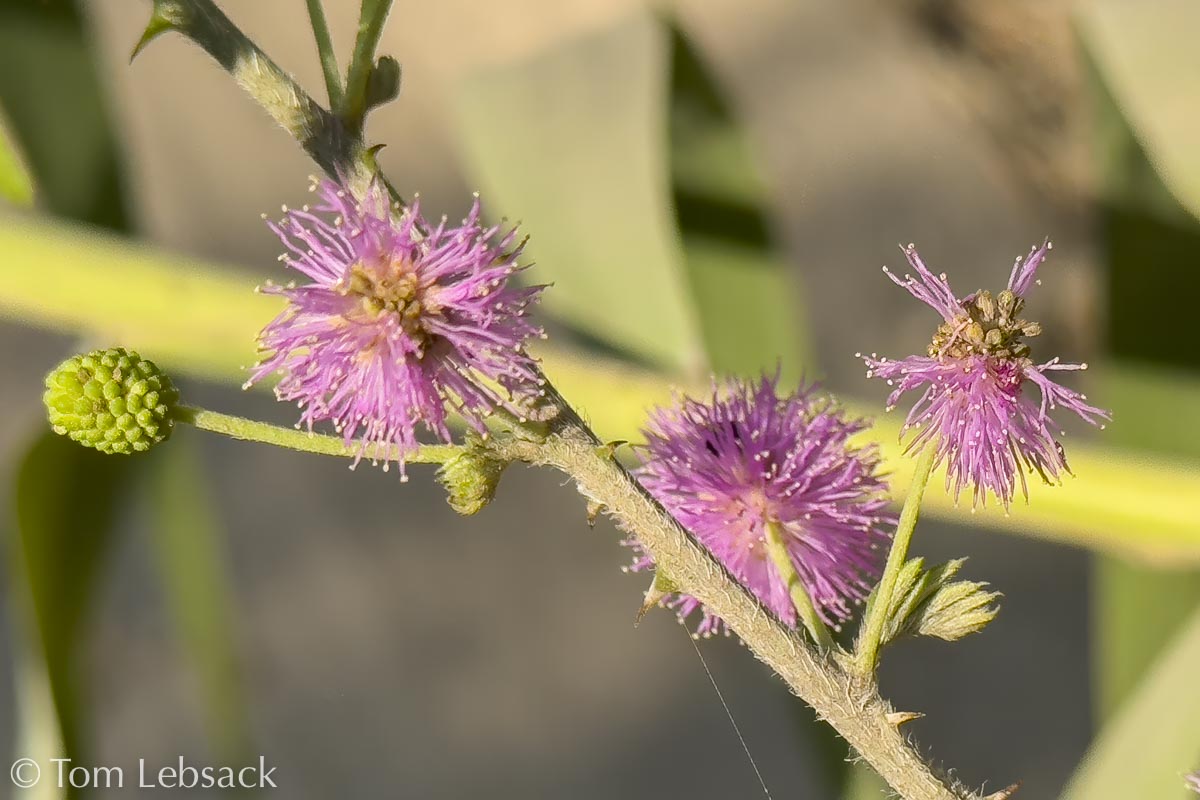Texas Wildbuds
Mimosa pigra var. asperata
(Black Mimosa)
| Scientific Name | Mimosa pigra var. asperata (M. pigra var. berlandieri, M. asperata) | USDA PLANTS Symbol | MIAS3 |
| Common Name | Black Mimosa, Puerto Rico Sensitive-briar | ITIS Taxonomic Serial No. | 507072 |
| Family | Fabaceae (Pea) | SEINet Reference |
Click Here |
| Description | Habitat: Clay soils in dry lake beds and resacas (dried, cut-off river channels). Plant: Tall, thicket-forming perennial shrub, 3 to 6 ft. tall; , much-branched and stems armed with recurved (bent-back) whitish prickles. Leaves: Bi-pinnately compound with 4 to 7 pairs of primary leaflets (pinnae), each 1 to 2-1/2 inches long, divided into 16 to 30 pairs of small secondary leaflets each 1/8 to 3/8-inch long and about 1 mm wide that fold up when disturbed. Inflorescence: Dense pink, ball-shaped heads 3/8 to 5/8-inch in diameter with many very small individual flowers each with 5 petals and 8 to 12 protruding stamens with pink filaments and yellow anthers. Bloom Period: March to November. Fruit: Flattened pod covered with short hairs; 1-5/8 to 2 inches long and about 1/3-inch wide with 8 or more segments. References: "Manual of the Vascular Plants of Texas" by Correll and Johnston, Flora of North America, iNaturalist and "A New Varietal Combination in Mimosa pigra" by Vincent, Zarucchi and Gandhi. |
BONAP Distribution Map Map Color Key Map Color Key |
Texas Status: Native |
Banner photo of Castilleja indivisa and Lupinus ssp. taken along FM 1323 north of Johnson City, Blanco County
© Tom Lebsack 2025
Every attempt is made to provide accurate, up-to-date, and relevant information, but the completeness or accuracy of any information presented on this website cannot be guaranteed. I use authoritative references to insure high standards of accuracy and review and update the information frequently.



